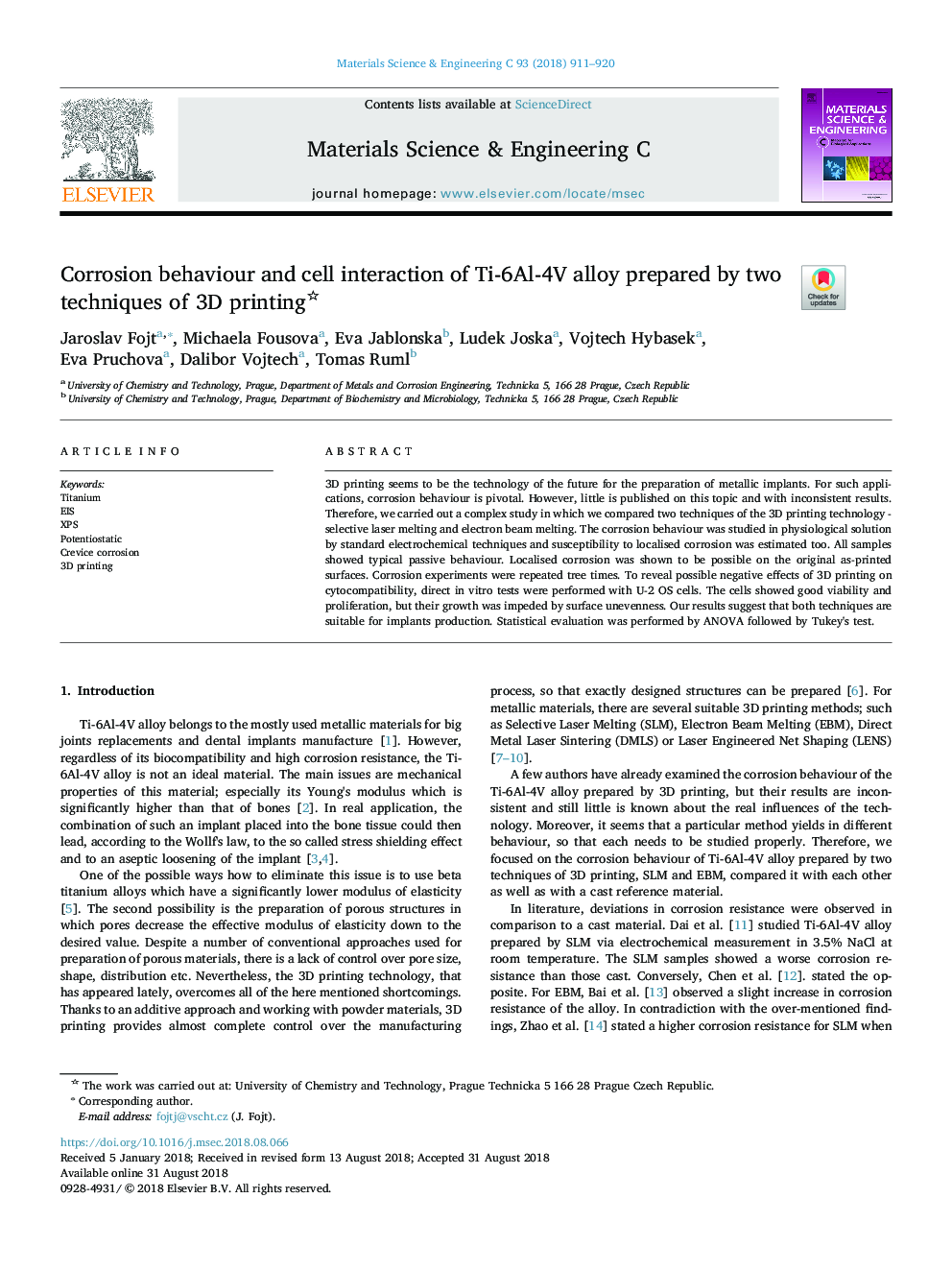| Article ID | Journal | Published Year | Pages | File Type |
|---|---|---|---|---|
| 11006729 | Materials Science and Engineering: C | 2018 | 10 Pages |
Abstract
3D printing seems to be the technology of the future for the preparation of metallic implants. For such applications, corrosion behaviour is pivotal. However, little is published on this topic and with inconsistent results. Therefore, we carried out a complex study in which we compared two techniques of the 3D printing technology - selective laser melting and electron beam melting. The corrosion behaviour was studied in physiological solution by standard electrochemical techniques and susceptibility to localised corrosion was estimated too. All samples showed typical passive behaviour. Localised corrosion was shown to be possible on the original as-printed surfaces. Corrosion experiments were repeated tree times. To reveal possible negative effects of 3D printing on cytocompatibility, direct in vitro tests were performed with U-2 OS cells. The cells showed good viability and proliferation, but their growth was impeded by surface unevenness. Our results suggest that both techniques are suitable for implants production. Statistical evaluation was performed by ANOVA followed by Tukey's test.
Related Topics
Physical Sciences and Engineering
Materials Science
Biomaterials
Authors
Jaroslav Fojt, Michaela Fousova, Eva Jablonska, Ludek Joska, Vojtech Hybasek, Eva Pruchova, Dalibor Vojtech, Tomas Ruml,
